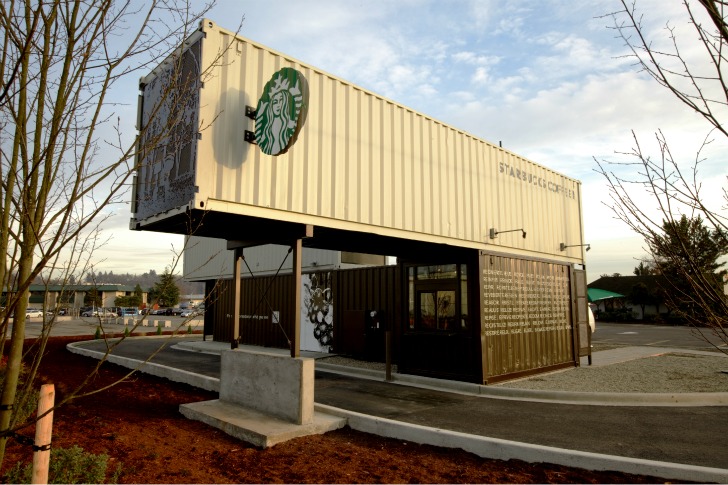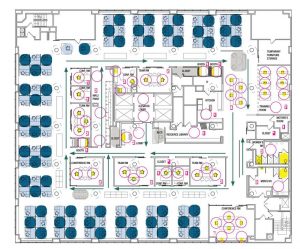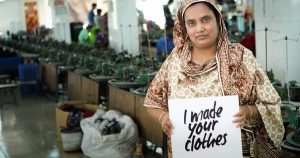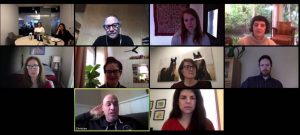Starbucks announces yet another sustainability initiative

They do this every few years. Will this one be any more successful?
Starbucks is in the news with its new sustainability commitment. CEO Kevin Johnson writes:
Today, I’m excited to be able to share with you our commitment to pursue a bold, multi-decade aspiration to become resource positive and give more than we take from the planet. This is an aspiration that we take on, recognizing it will come with challenges and will require transformational change. Like most things that are worthwhile, this will not be easy. It will require all of us to play a role, and so we invite you to join us.
This sounds promising! Transformational Change! Johnson then lists “five environmental strategies that will begin to move us toward a resource-positive future:”
1. We will expand plant-based options, migrating toward a more environmentally friendly menu.
This is from the company that invented the Frappuccino, now noting that dairy products are their biggest source of carbon dioxide emissions. They taught us to buy a giant cup of frothy milk and cream instead of a cup of coffee. Will Starbucks now take lessons from TreeHugger writer Katherine in how to drink coffee like an Italian? or from Melissa about how to drink like a Parisian? “Rather than the enormous and expensive sugar-caffeine concoctions that require a plastic-coated-paper bucket we are accustomed to in the U.S., Parisians drink small, affordable cups of coffee without waste.”
2. We will shift from single-use to reusable packaging.
This is one we have heard before, most notably in 2008 when Starbucks promised that by 2015 they would offer a 100 percent recyclable paper cup and would sell 25 percent of their drinks in reusable cups. They had to back down from that pretty quickly and, according to Stand.earth, now sell only 1.4 percent of their drinks in reusable cups. This is, I believe, an impossible goal because of the fundamental nature of their business; really, points 2, 4 and 5 are all about system design.
3. We will invest in innovative and regenerative agricultural practices, reforestation, forest conservation and water replenishment in our supply chain.
Starbucks is very proud of the fact that they achieved “the milestone of sourcing 99% of our coffee ethically through C.A.F.E. (Coffee and Farmer Equity) practices.” The trouble is, they wrote the standard because existing standards like Fair Trade had some tougher rules, particularly with respect to workers rights. It is a lot easier to meet the rules when you write the rules. (Margaret Badore’s post Starbucks says it now serves “99 percent ethically sourced coffee.” So what does that mean? )
4. We will invest in better ways to manage our waste, both in our stores and in our communities, to ensure more reuse, recycling and elimination of food waste.
5. We will innovate to develop more eco-friendly stores, operations, manufacturing and delivery.
One really has to look at 2, 4 and 5 together. Because as long as Starbucks builds drive-through stores and promotes take-out coffee, it is going to be almost impossible to significantly reduce waste or call the stores “eco-friendly.” What happens inside the store and outside are inseparable. Because while Starbucks is talking to the Ellen Macarthur Foundation about the circular economy, they mostly are in a linear business of selling stuff in disposable containers that go out the door.
A dozen years ago Starbucks wanted to be a “third place” and was saying, “We want to provide all the comforts of your home and office. You can sit in a nice chair, talk on your phone, look out the window, surf the web… oh, and drink coffee too.” But in fact, it’s a takeout business thriving in the linear economy. As I noted earlier:
Linear is more profitable because someone else, often the taxpayer, picks up part of the tab. Now, the drive-ins proliferate and take-out dominates. The entire industry is built on the linear economy. It exists entirely because of the development of single-use packaging where you buy, take away, and then throw away. It is the raison d’être.
The customer now supplies the real estate, in the form of their car, and the cup size can increase forever because turnover in the restaurant is no longer an issue. The whole system conspires against these changes. That’s why their three targets also sound hollow:
- A 50 percent reduction in carbon emissions in Starbucks direct operations and supply chain.
- 50 percent of water withdrawal for direct operations and coffee production will be conserved or replenished with a focus on communities and basins with high water risk.
- A 50 percent reduction in waste sent to landfill from stores and manufacturing, driven by a broader shift toward a circular economy. To underscore its commitment to the circular economy, Starbucks is pleased to sign the Ellen MacArthur Foundation’s New Plastics Economy Global Commitment, setting ambitious circular targets for its packaging.
The bulk of Starbucks-related emissions are from the cars that are driven there. They are still building suburban stores. Similarly, the bulk of the waste sent to landfill comes from the customer, not them. They have outsourced the great bulk of their emissions and waste to their customers. Or as I noted in my review of their shipping container drivethrough that was promoted as being “sustainable”:
[The problem is] our consumption of petroleum and its conversion into carbon dioxide. It is the single biggest issue we have to deal with to solve our climate problems and our energy security problems. This building is just another cog in sprawl-automobile-energy industrial complex that we have to change if we are going to survive and prosper. We have to stop sprawl, not glorify it; covering it in the R-words is sanctimonious and delusional, and Starbucks knows it.
As noted, Starbucks’ 2008 pledges didn’t work out, primarily because of customer resistance. So this time, Johnson says, “The coming year will involve comprehensive market research and trials to better understand consumer behavior and incentives to encourage more use of reusable containers.”
Unfortunately the problem is systemic. We have had 60 years of training in this disposable culture. That’s why we have said that we have to change our culture, not our coffee cup. We have to drink coffee like Italians and eat like Parisians and unlearn everything that Starbucks has taught us. Are they up for that?
 © Starbucks Infographic
© Starbucks InfographicThey do this every few years. Will this one be any more successful?







